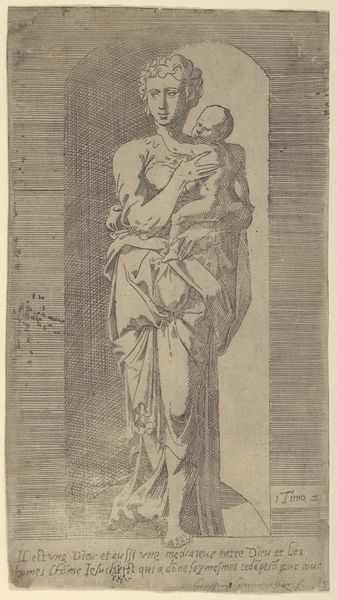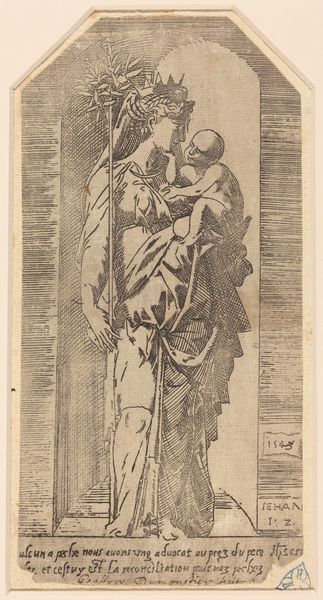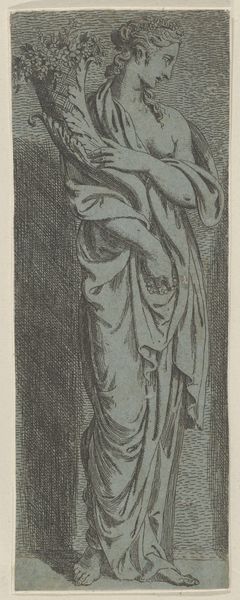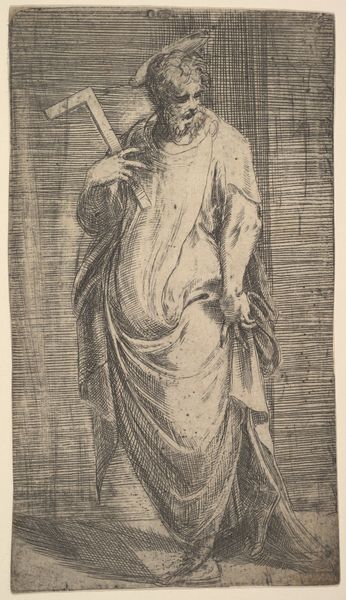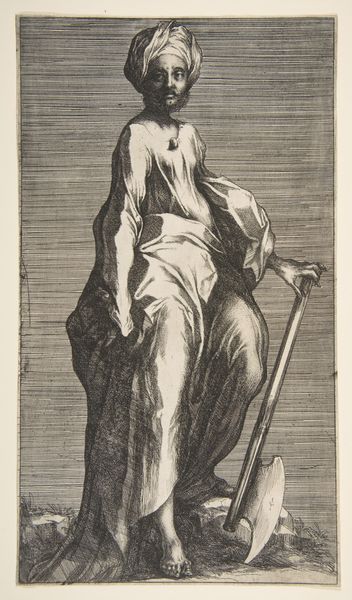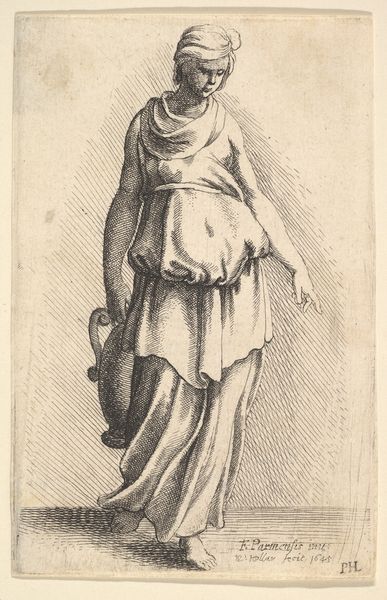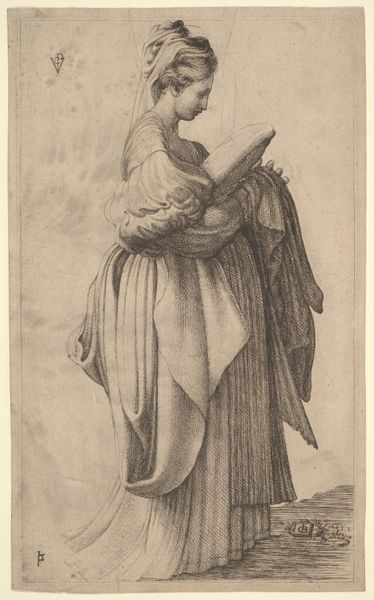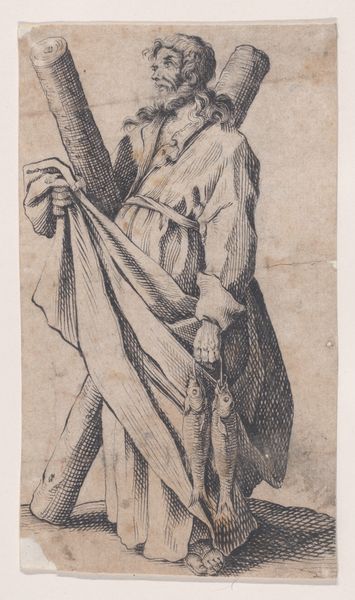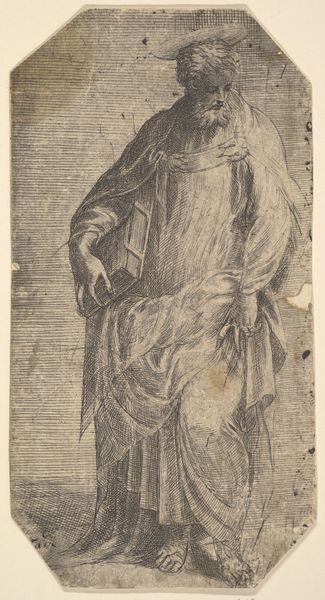
drawing, print, engraving
#
portrait
#
drawing
#
medieval
# print
#
figuration
#
history-painting
#
engraving
Dimensions: Sheet: 8 3/4 x 4 1/2 in. (22.3 x 11.4 cm)
Copyright: Public Domain
Curator: Looking at this print, a female saint as captured by Geoffroy Dumoubtier between 1530 and 1573, it strikes me as possessing a particular kind of serene confidence. There's a quiet dignity emanating from her pose and expression. Editor: The halo absolutely dominates! At first glance, I read it as an assertion of power, of unquestionable authority. I'm immediately curious about who this is intended to speak to. Curator: I agree, the halo radiates divinity. The palm fronds she holds are emblems of martyrdom, victory, triumph, eternal life—symbols prevalent throughout antiquity. And she holds what looks to be a book. Do these symbolic objects hint at possible figures and broader narratives that viewers at the time would recognize? Editor: Interesting that her garment appears to expose her chest somewhat—a subversive touch that destabilizes her visual connection to the church in my reading, although the robe overall provides a classicizing feel. The artist’s choice raises questions around the representation of female saints in terms of objectification and reverence. Is there any knowledge surrounding the intended viewer and social impact? Curator: The composition follows typical figuration practices of the time. With prints like this, it's tricky to nail down definitive interpretations of viewer impact, but the artistic choices can be contextualized within shifting power structures during and after the Reformation. Dumoubtier may have aimed to spark devotion and commemorate this figure, reinforcing existing structures, but her barely veiled chest is indeed something that feels particularly… of its own world. The female figure's look seems so unbothered. Editor: Right, but considering how portraits historically function to solidify certain types of identities—whether familial, societal, religious—I wonder how we can also frame this work within contemporary discussions around gender and faith and re-evaluate the visual construction and maintenance of these images. It's crucial for these older images not to sit solely within a traditional framework but connect to current cultural, political, and social climates. Curator: Absolutely, her visual history isn't fixed, even centuries later. I appreciate how considering symbolic language in art compels a look at continuity in representation. Editor: Yes, I find value in exploring those layered connections and opening dialogues about these works across generations.
Comments
No comments
Be the first to comment and join the conversation on the ultimate creative platform.
